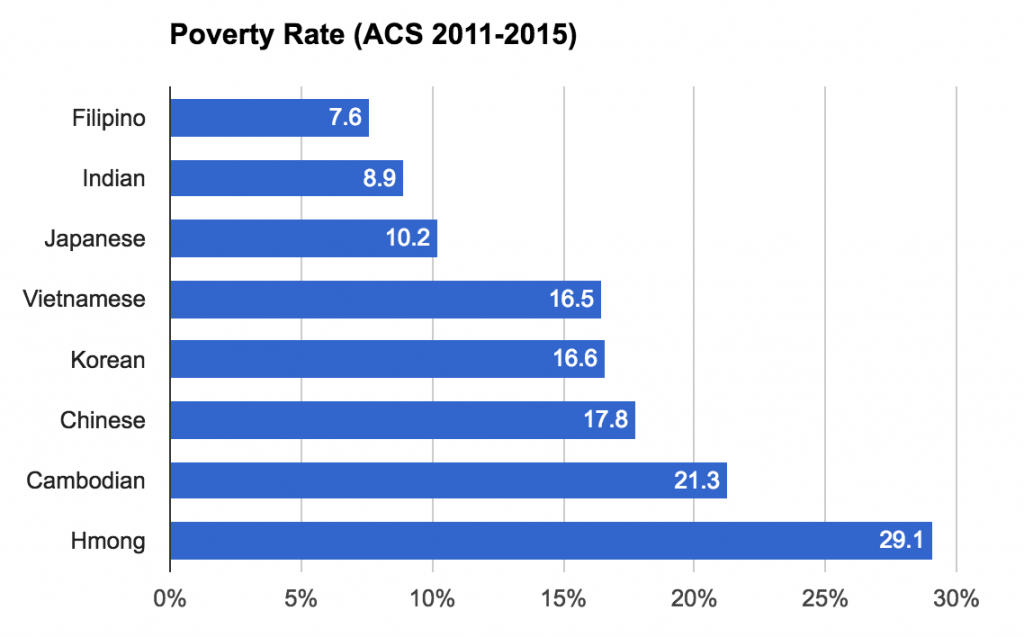Andrew Sullivan has a post where he argues that the economic success of Asians in the United States suggests that the lack of success of other groups cannot be chalked up to racism. One response to this kind of argument is that, as a historical matter, anti-Asian racism did hold Asians back and Asians only began to succeed when that racism receded for a number of badly-motivated reasons (see Ellen Wu). In addition to that point, I think it is useful to note that Asian economic success also varies a lot by group.
Analysis on Asian subgroups is often hard to come by because they are such a small share of the overall population that it is difficult to get good sample sizes. However, if you use the 5-year American Community Survey (ACS) files, you can get enough responses to focus in on Asian subgroups. This is what I have done for this post, using the 2011-2015 ACS data.
Here are the poverty rates for the various racial groups in this data set.
During this period, Asians had lower poverty than the population in general, but higher poverty than non-Hispanic whites. Nonetheless, it is the case that when you analyze Asians all together, their poverty situation is much different from every other non-white group.
But here are the poverty rates of various Asian subgroups from the same data set.
Some Asian groups are doing well but others are doing very poorly. Cambodians and Hmong people for instance have poverty rates that are similar to those of Blacks, Natives, and Latinos.
Statements like the one Sullivan made do not just wave over the complicated history of the matter. They also mislead people about the current situation of Asians in America. When you group them all together, the subgroups that are doing well make up a big enough share of the overall Asian population that you get some relatively good overall statistics. But the reality is that “Asians” refers to many different groups that have very divergent economic situations.

